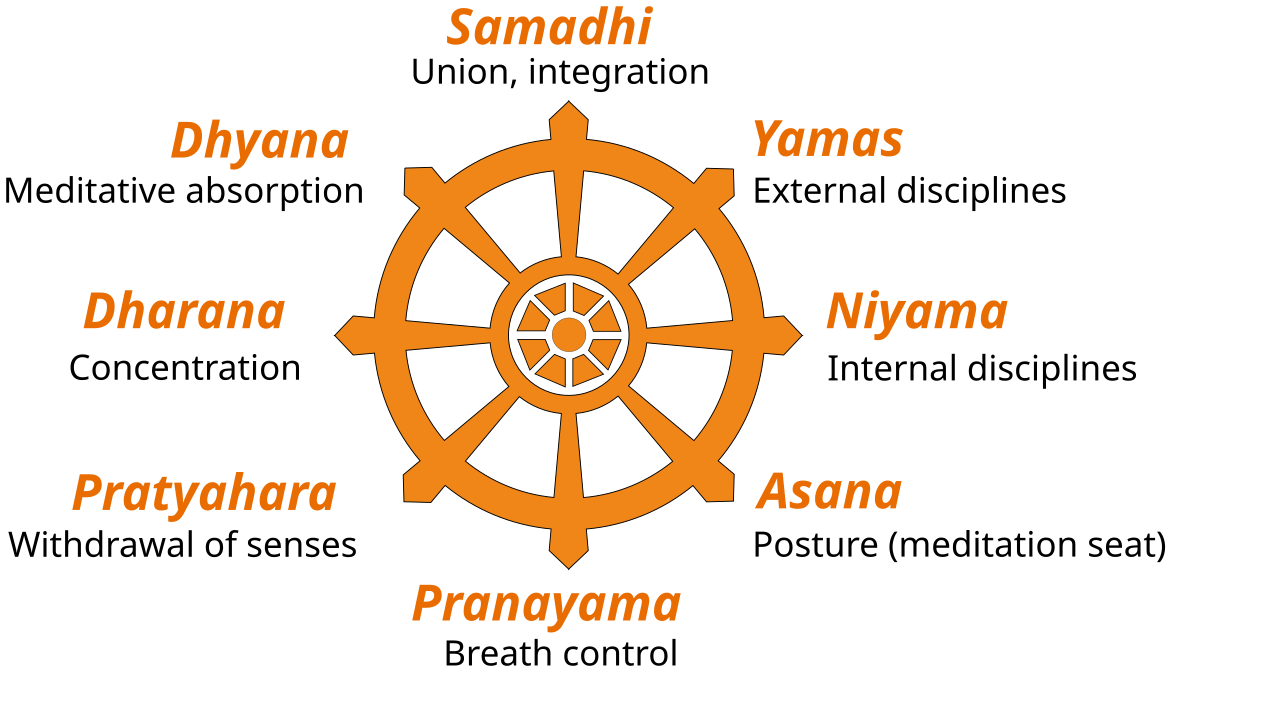In my short story,’Apocalypse Inc’, Eustace is a practitioner of Yoga. So naturally I had to look into the different types to find the most congruent fit for him. Here’s what I came across. There’s a lot of yoga out there.
I had to have some reason for Vayu to turn up in person to speak with Adam about Eustace so I had Eustace be an advanced practitioner of a form of yoga – which had me looking into different forms of yoga. I always knew there were more than one but wanted to look into which were the first and classical yogas before all these new variations. I settled on Raja yoga for Eustace.
The six traditional forms of yoga are often called the six Darshanas (paths) of yoga. These originated in ancient India and have been practised for centuries. Here’s a brief overview of each:
Raja Yoga (the Royal Path):
Often considered the core practice of yoga, Raja Yoga focuses on attaining enlightenment through self-discipline and meditation. It emphasizes the Eight Limbs of Yoga, a structured path to liberation. Read More
Karma Yoga (the Path of Action):
Emphasizes selfless service and acting without attachment to the fruits of your labour. It teaches fulfilling your duties with a pure heart and mind. Read More
Bhakti Yoga: (the Path of Devotion):
Focuses on cultivating love and devotion for a higher power or deity. It involves practices like chanting, singing, and prayer. Read More
Jnana Yoga (the Path of Knowledge:
Emphasizes gaining knowledge and wisdom through study, reflection, and discrimination. It encourages seeking the truth about the nature of reality and the self. Read More
Tantra Yoga (Path of Ritual and Transformation):
Tantra Yoga is a complex and multifaceted path rooted in Hinduism and Buddhism. It uses rituals, mantras, and physical postures to awaken inner energy and achieve spiritual liberation. Read More
Hatha Yoga(the Path of the Physical):
The West’s most widely recognized form of yoga focuses on physical postures (asanas) and breathing exercises (pranayama) to purify the body and mind, preparing one for meditation. Read More
The Eight Limbs of Yoga, also known as Ashtanga Yoga.
A framework outlined in the Yoga Sutras by Patanjali, a sage from ancient India. These limbs are considered a guide to ethical conduct and spiritual growth, leading to a state of liberation (moksha). They progress from outward disciplines to inward practices:

Yamas (Restraints):
These ethical principles govern how you interact with the world around you. They include:
• Ahimsa (Non-violence)
• Satya (Truthfulness)
• Asteya (Non-stealing)
• Brahmacharya (Celibacy or moderation)
• Aparigraha (Non-possessiveness)
Niyamas (Observances):
These are self-disciplinary practices that guide your personal behavior and habits. They include:
• Saucha (Cleanliness)
• Santosha (Contentment)
• Tapas (Austerity or discipline)
• Svadhyaya (Self-study)
• Isvarapranidhana (Surrender to a higher power)
Asana (Posture):
This is the aspect of yoga most familiar in the West. It involves practising physical postures (poses) to improve strength, flexibility, and stability.
Pranayama (Breath Control):
Pranayama focuses on controlling the breath to improve energy flow (prana) and mental clarity.
Pratyahara (Withdrawal of Senses):
This limb involves turning your inward attention away from external stimuli and distractions.
Dharana (Concentration):
Here, you focus attention on a single object or point of thought.
Dhyana (Meditation):
Dhyana is a state of deep meditation where concentration becomes effortless and continuous.
Samadhi (Absorption):
This is the final limb, a state of complete absorption or oneness with the object of meditation. It is considered a state of perfect peace and liberation.
The Eight Limbs are not meant to be achieved linearly. They are guides that can be practised and revisited throughout your yoga journey.